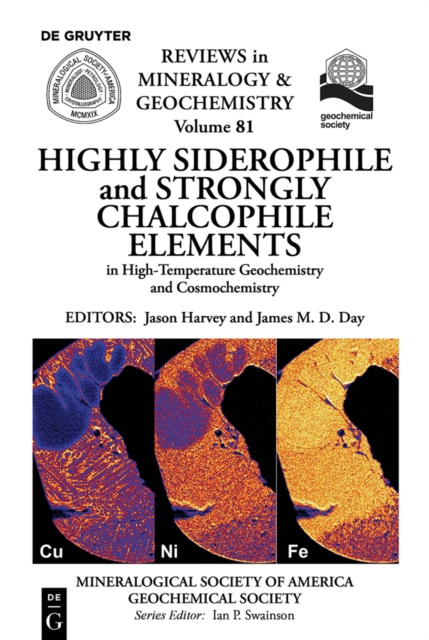
Highly Siderophile and Strongly Chalcophile Elements in High-Temperature Geochemistry and Cosmochemistry PDF
Edited by Jason Harvey, James Day
Part of the Reviews in Mineralogy & Geochemistry series
Description
Highly Siderophile and Strongly Chalcophile Elements in High Temperature Geochemistry and Cosmochemistry, Volume 81
This RiMG (Reviews in Mineralogy & Geochemistry) volume investigates the application of highly siderophile (HSE) and strongly chalcophile elements. This volume has its origin in a short course sponsored by the Mineralogical Society of America and the Geochemical Society held in San Diego, California on the 11th and 12th December 2015, ahead of the American Geophysical Union's Fall Meeting, which featured a session with the same title.
Topics in this volume include:
- analytical methods and data quality
- experimental constraints applied to understanding HSE partitioning
- nucleosynthetic variations of siderophile and chalcophile elements
- HSE in the Earth, Moon, Mars and asteroidal bodies
- HSE and chalcophile elements in both cratonic and non-cratonic mantle, encompassing both sub-continental and sub-oceanic lithosphere
- the importance of the HSE for studying volcanic and magmatic processes, and an appraisal of the importance of magmatic HSE ore formation in Earth's crust.
Highly siderophile and strongly chalcophile elements comprise Re, Os, Ir, Ru, Pt, Rh, Pd, Au, Te, Se and S and are defined by their strong partitioning into the metallic phase, but will also strongly partition into sulfide phases, in the absence of metal. The chemical properties of the HSE mean that they are excellent tracers of key processes in high temperature geochemistry and cosmochemistry, having applications in virtually all areas of earth science. A key aspect of the HSE is that three long-lived, geologically useful decay systems exist with the HSE as parent (107Pd-107Ag), or parent-daughter isotopes (187Re-187Os and 190Pt-186Os).
The material in this book is accessible for graduate students, researchers, and professionals with interests in the geochemistry and cosmochemistry of these elements, geochronology, magmatic ore bodies and the petrogenesis of platinum-group minerals.
Information
-
Download - Immediately Available
- Format:PDF
- Pages:797 pages
- Publisher:De Gruyter
- Publication Date:07/03/2016
- Category:
- ISBN:9781501502095
Information
-
Download - Immediately Available
- Format:PDF
- Pages:797 pages
- Publisher:De Gruyter
- Publication Date:07/03/2016
- Category:
- ISBN:9781501502095










